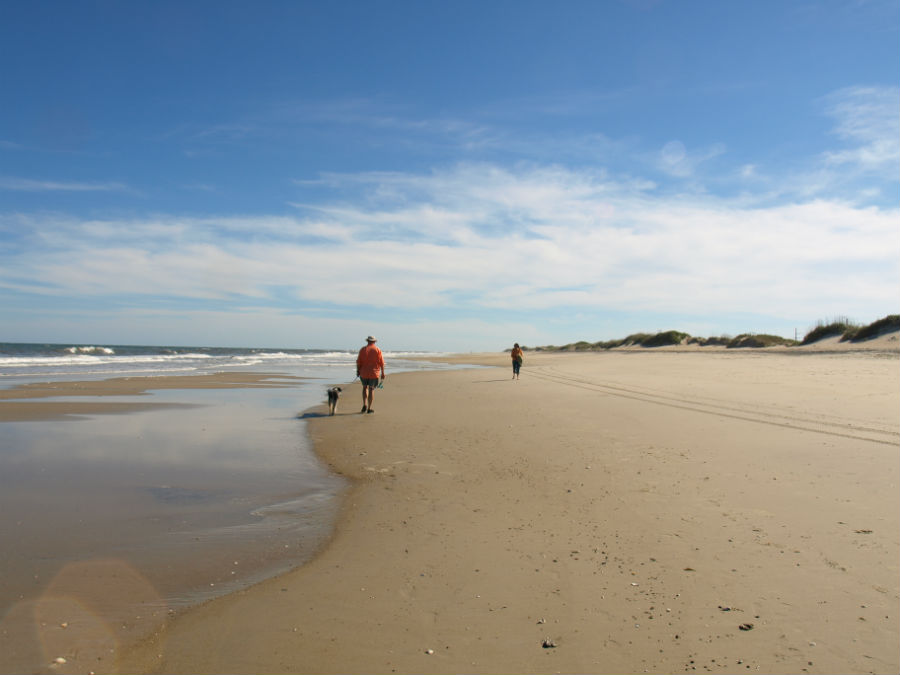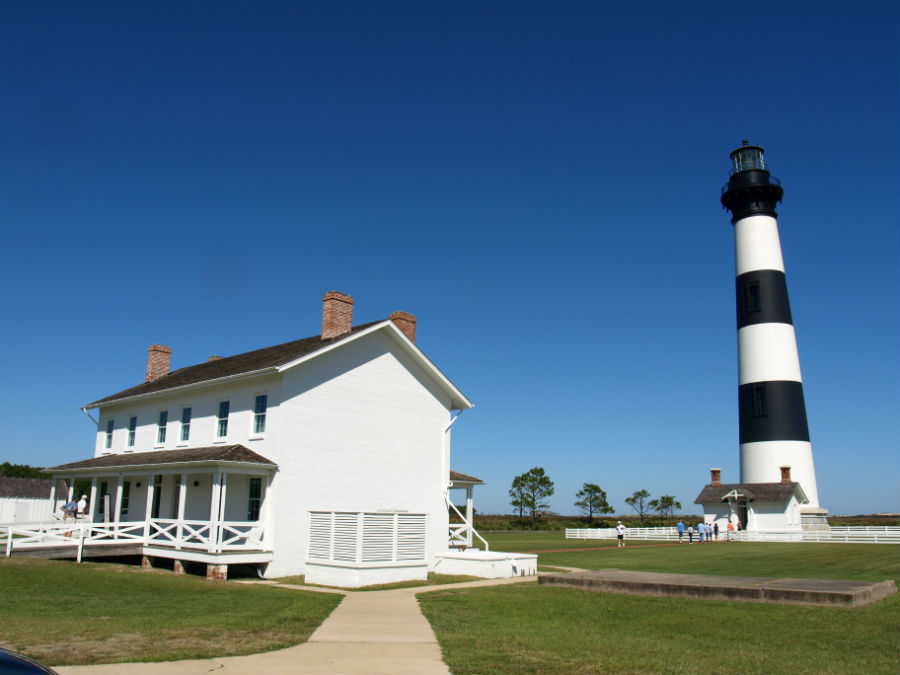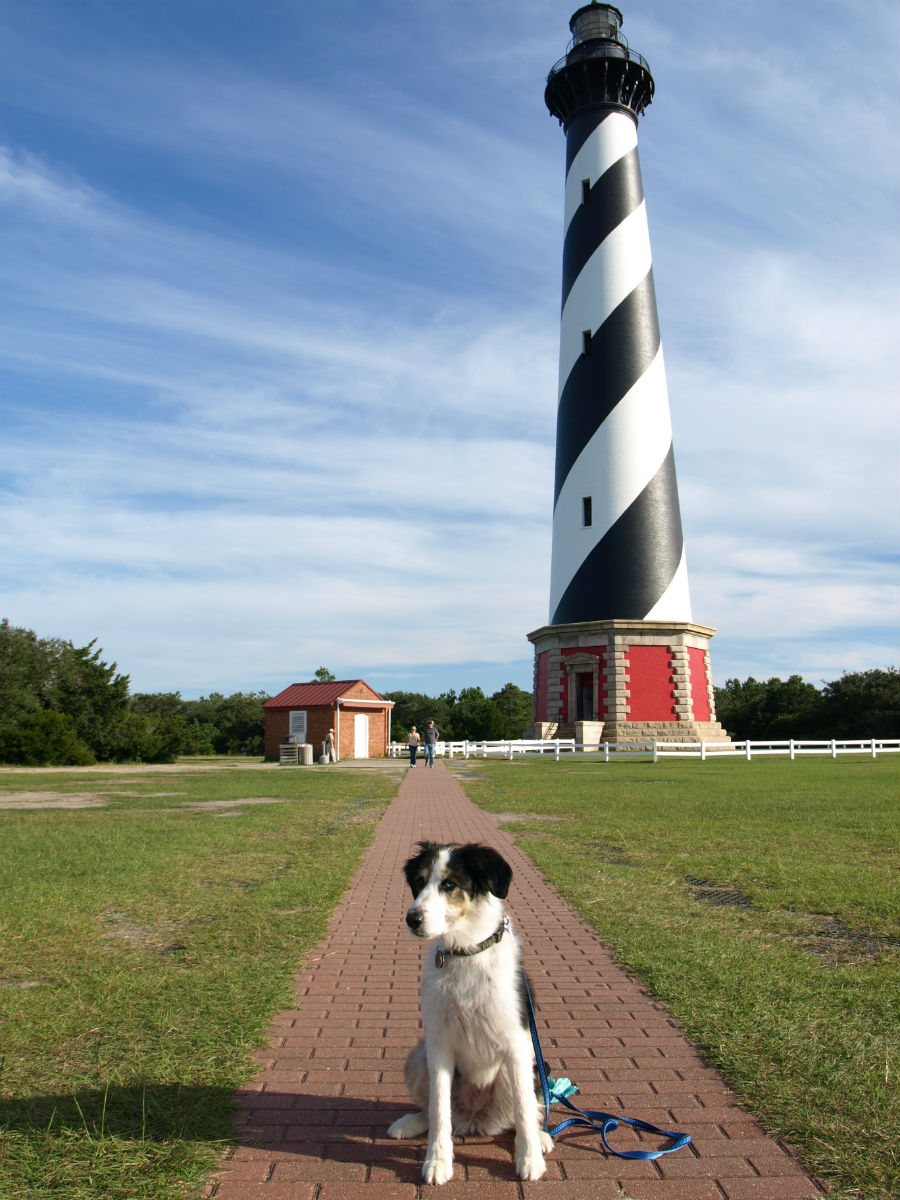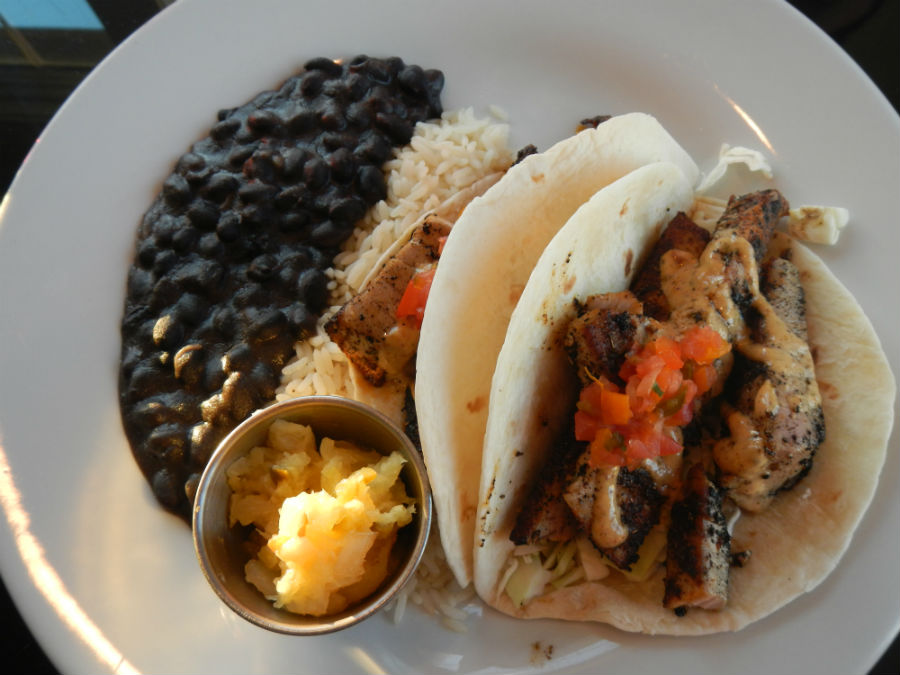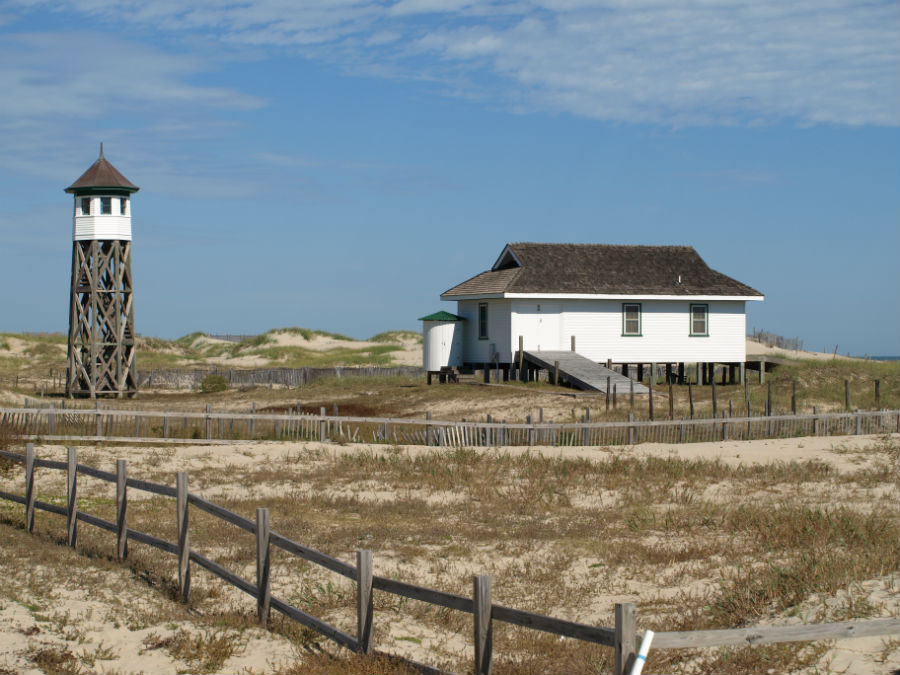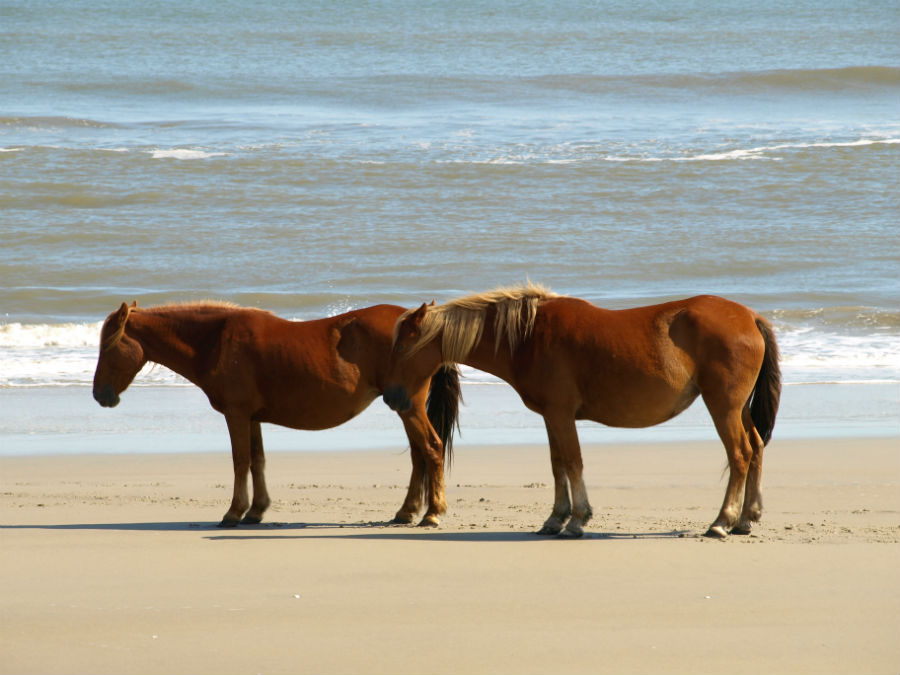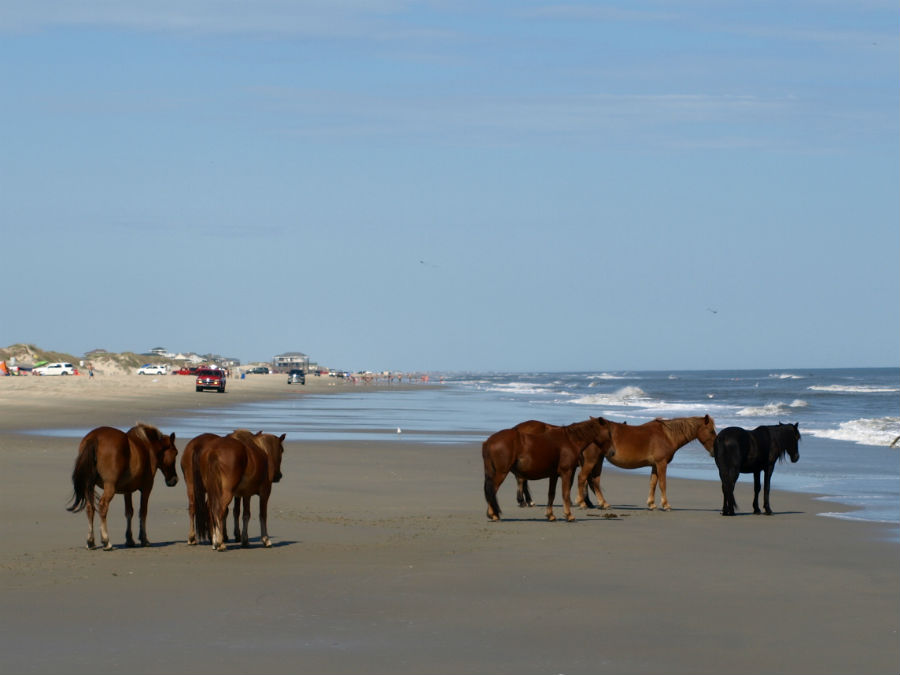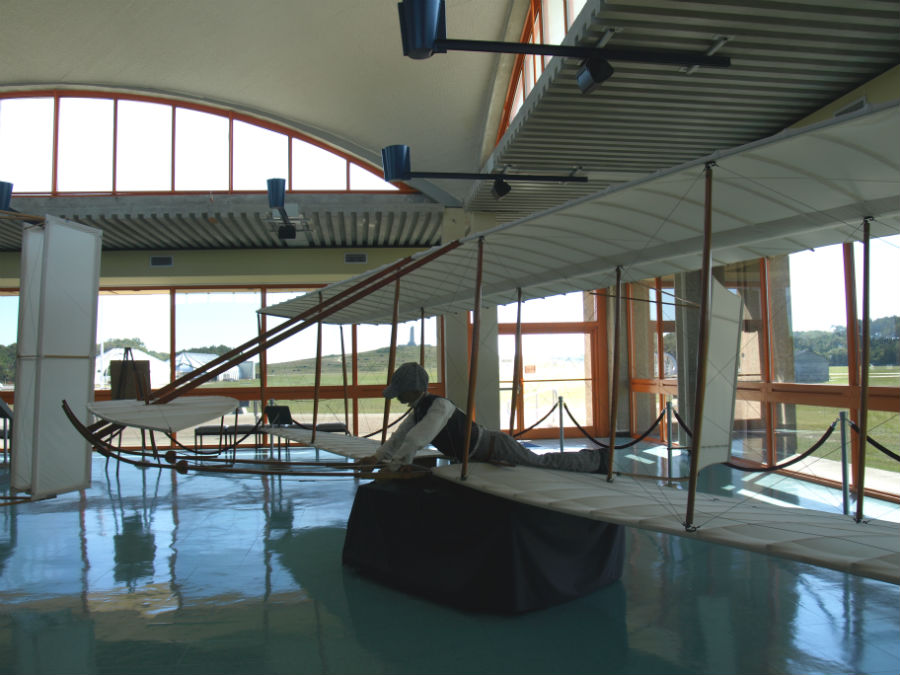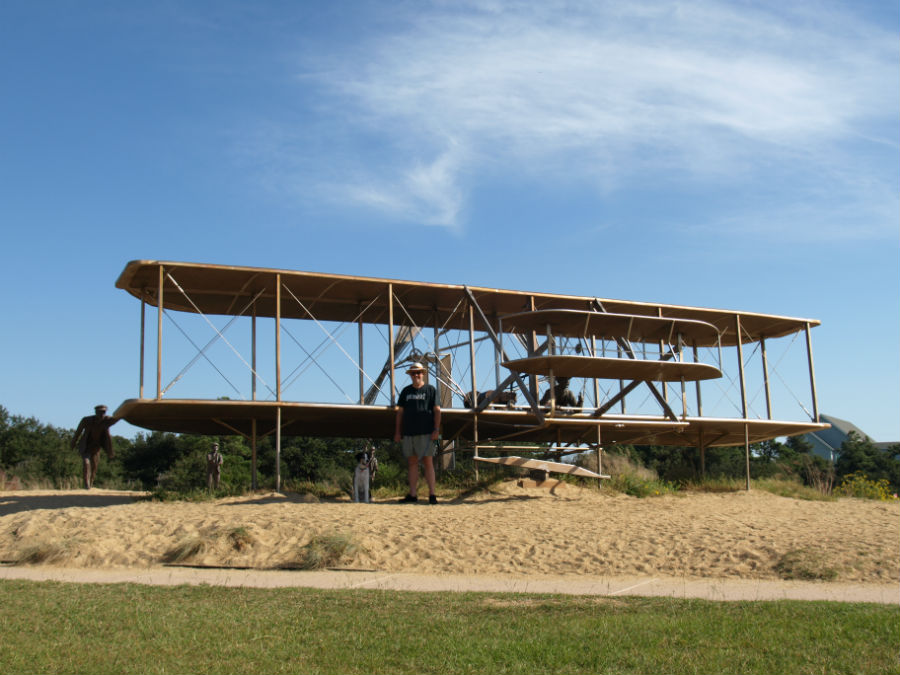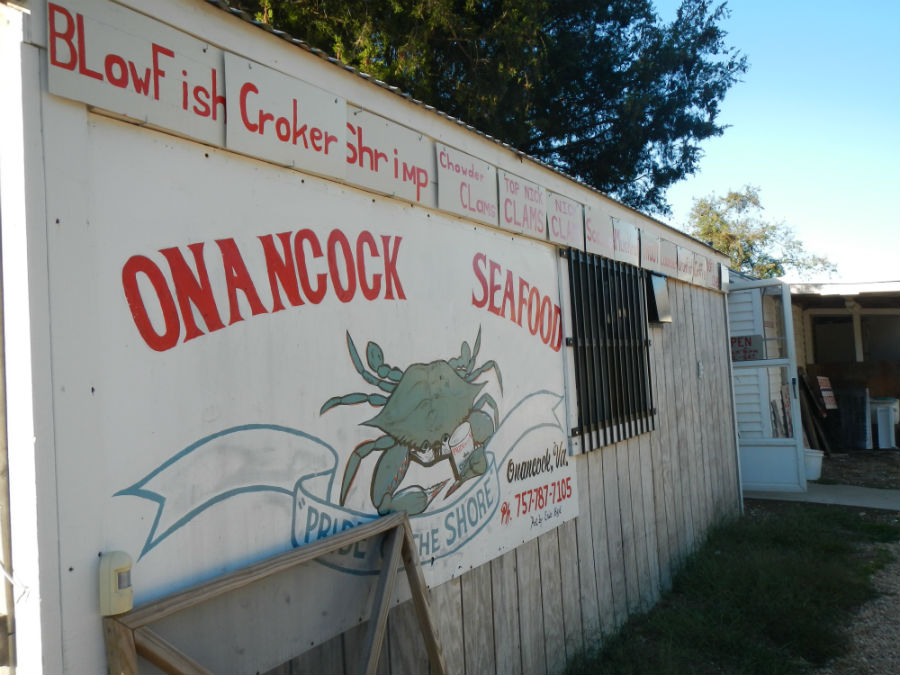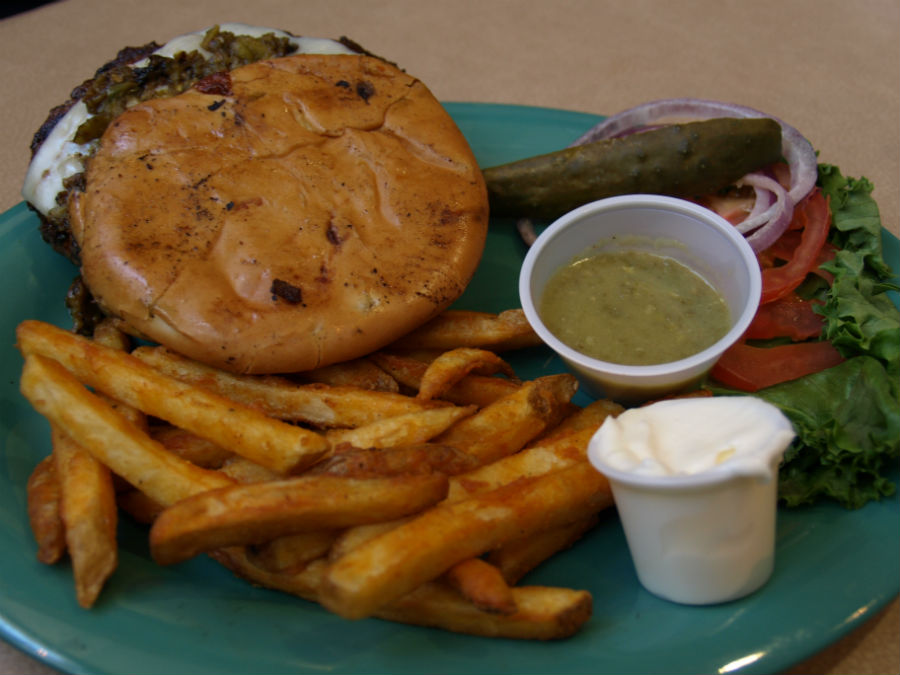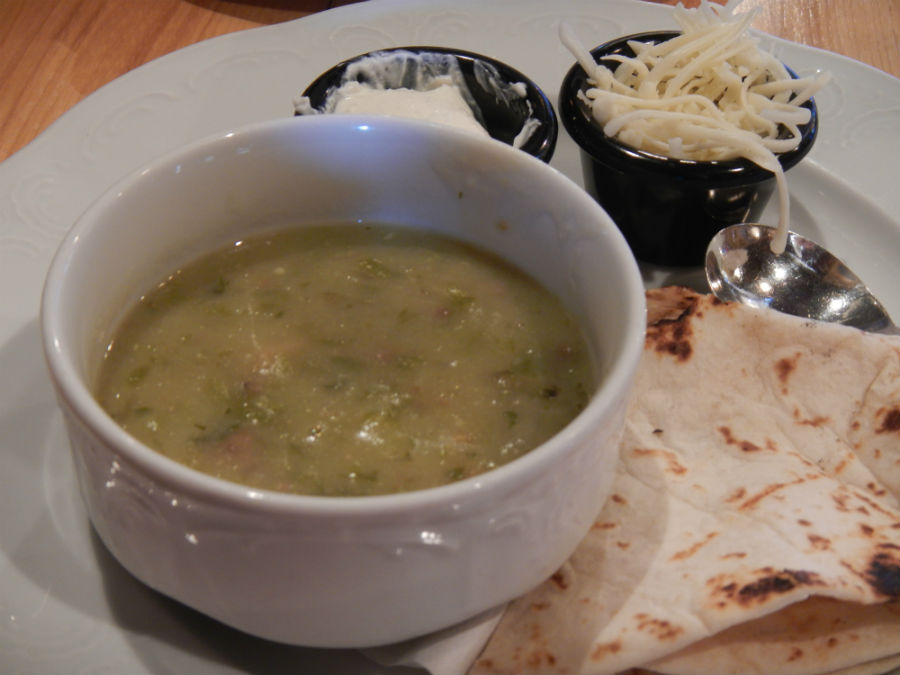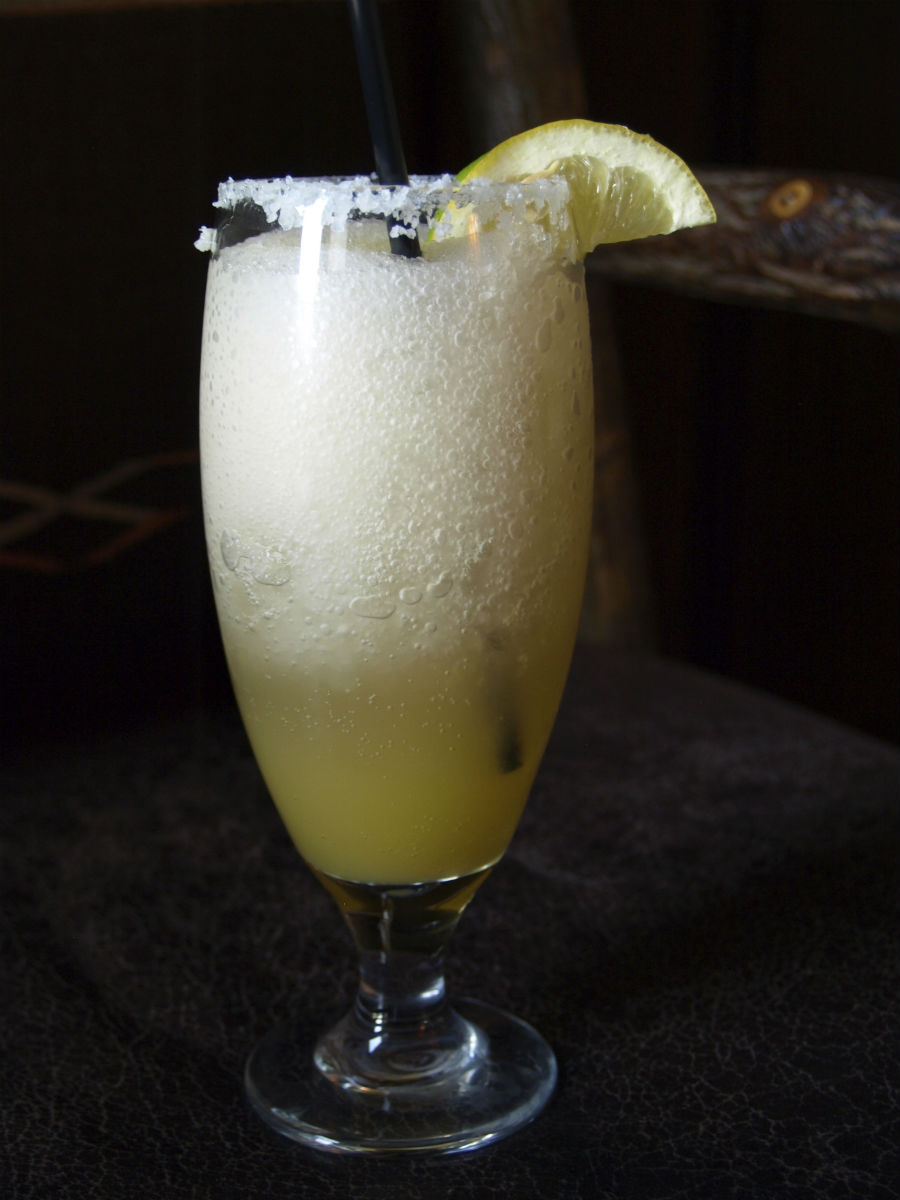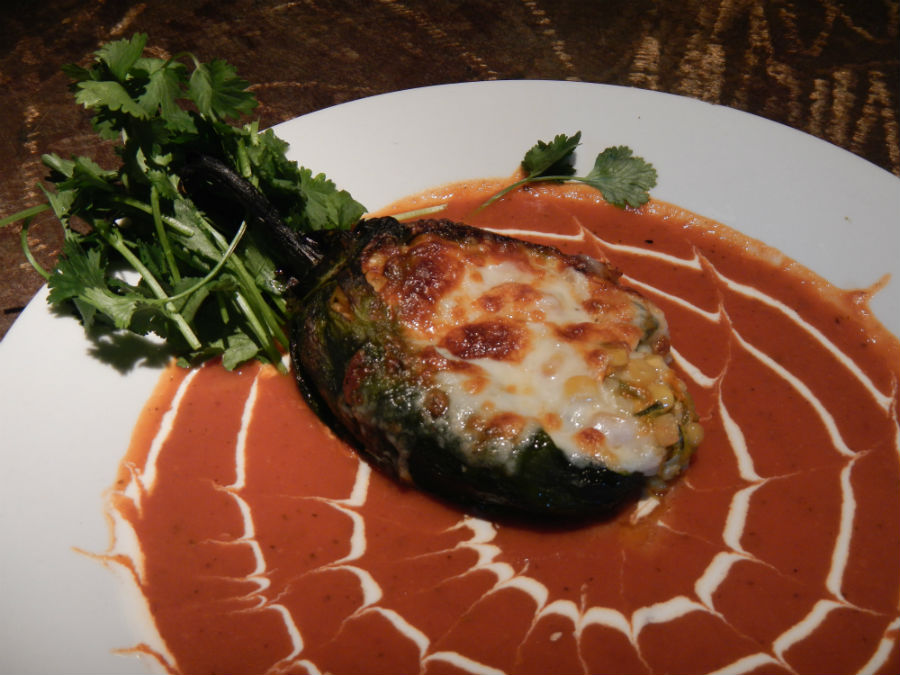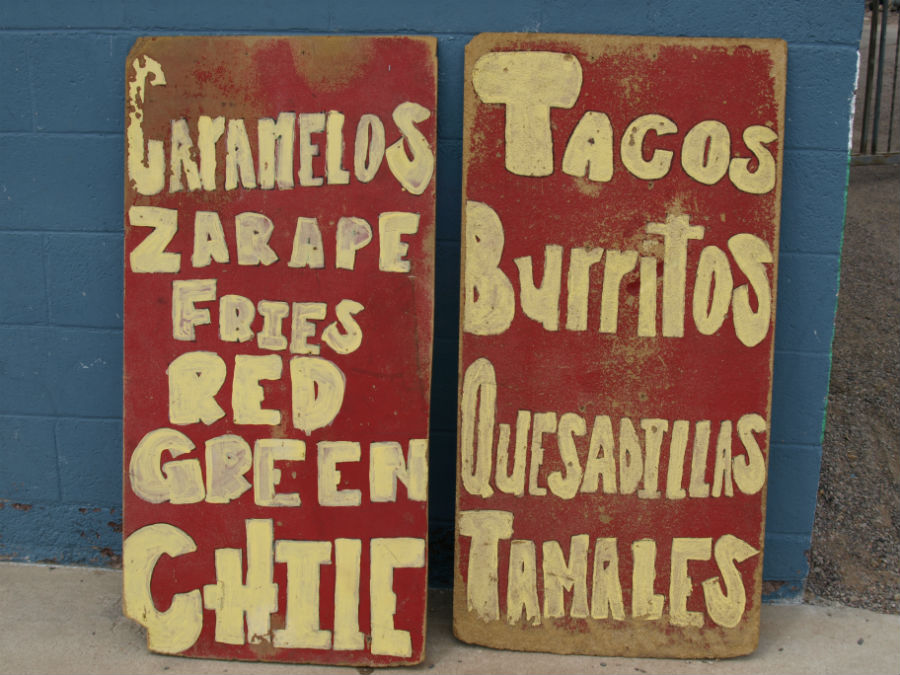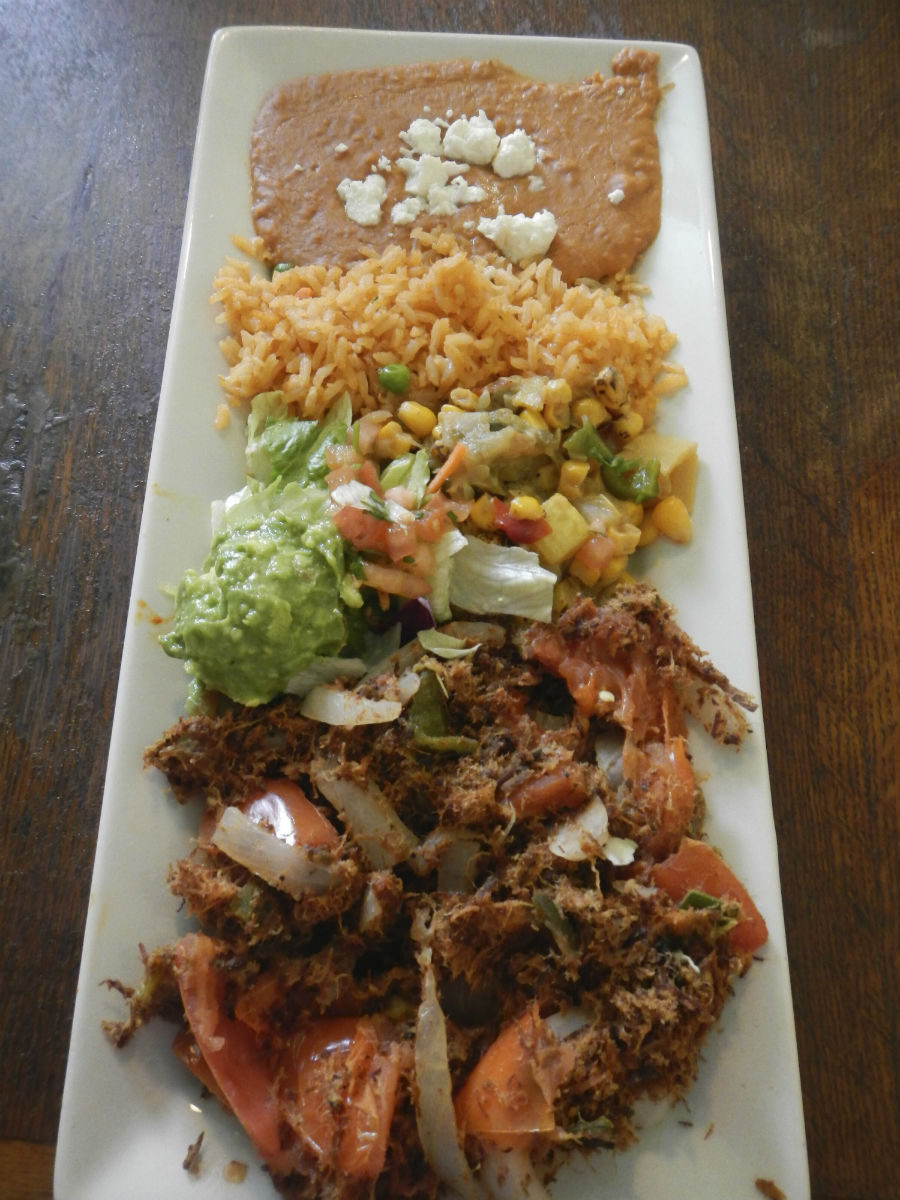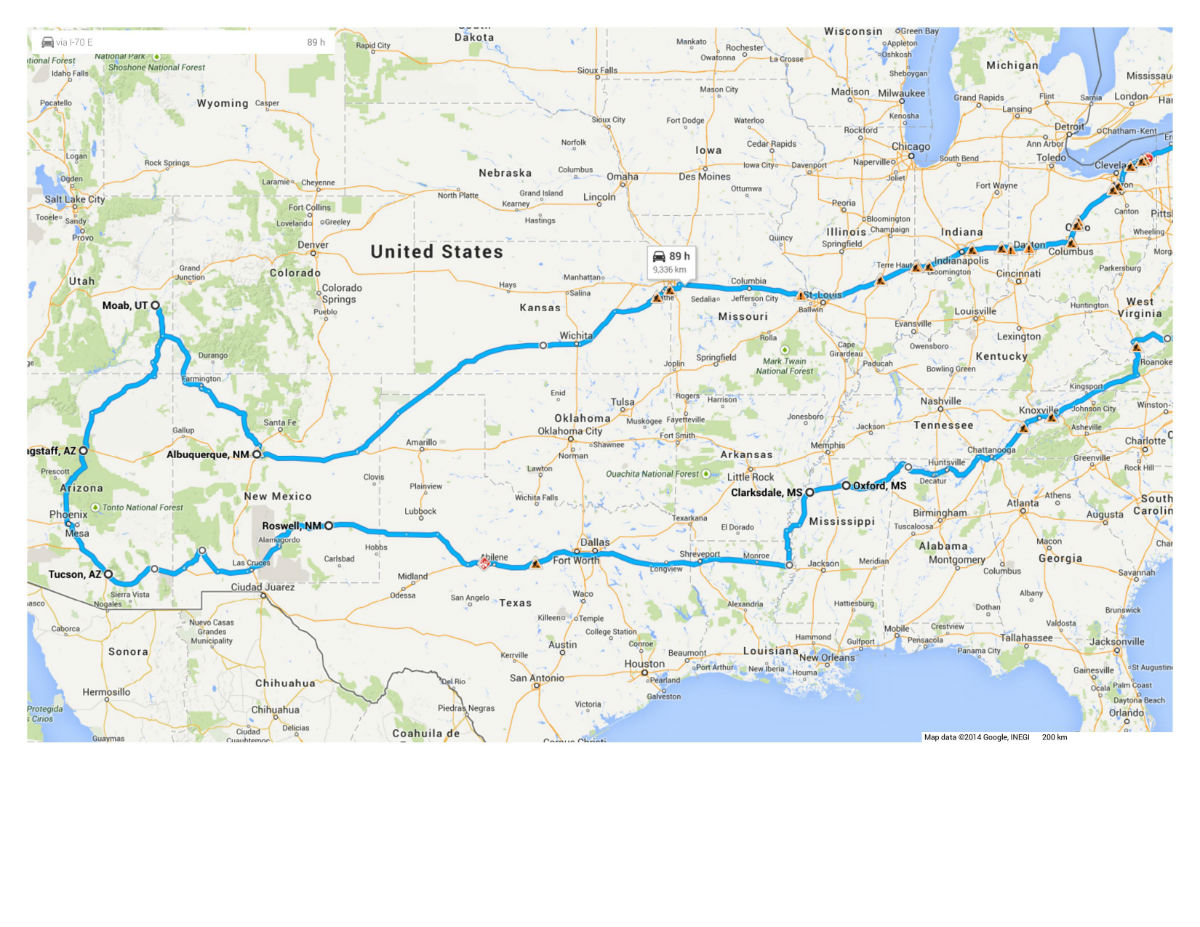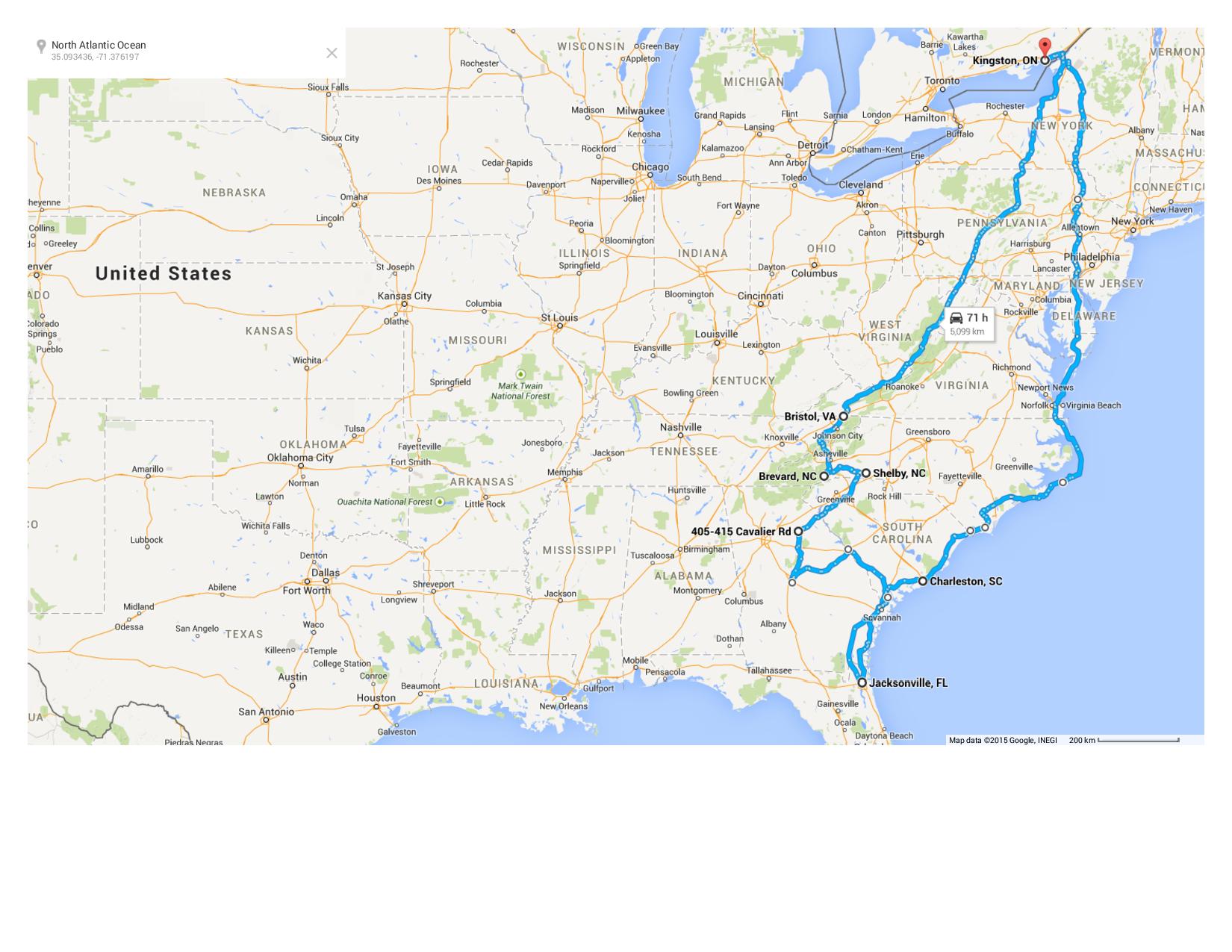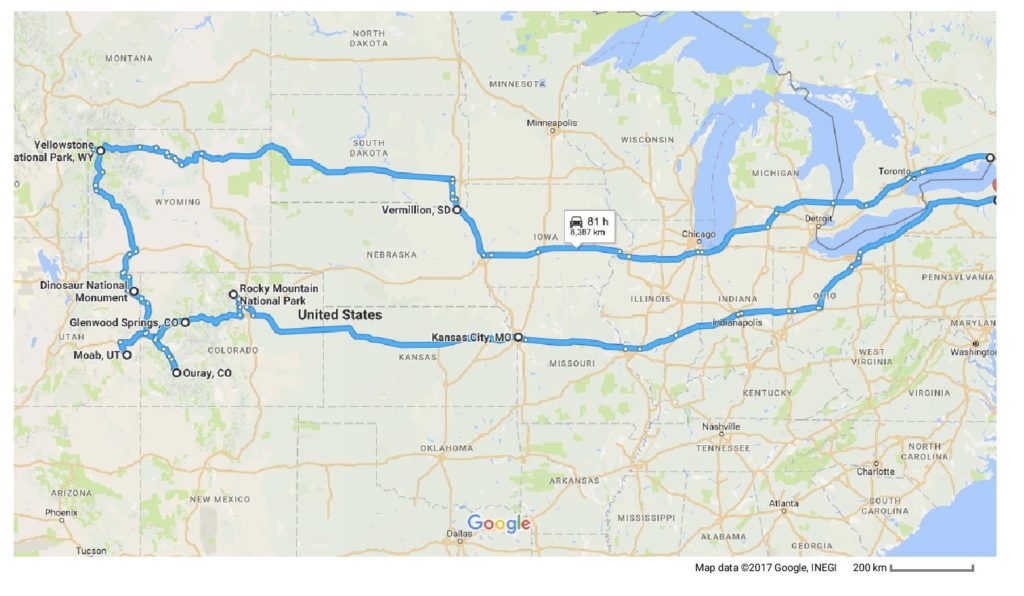Think of this page as a “sampler plate.” To completely cover the range of Southern cooking would require pages and pages (and pages . . .). These are the tastes and flavours we thought of as classic Southern, the must-trys, the belt-looseners. It was a tough job, but someone had to do it.
1. GRITS
Sign outside a typical Southern restaurant (which, of course, serves grits):

The Nuts & Bolts: As Canadians, we don’t think we’d have a hope of finding them on the shelf in our local grocery store. This quintessential Southern dish is made from finely ground corn cooked with milk or water and enhanced with cheese, eggs, butter, hot sauce, shrimp, etc. It shows up on breakfast menus south of the Mason-Dixon line but is just at home on a lunch or dinner menu.
Must-Eat Experiences:
- After a month of ordering Shrimp and Grits at every possible opportunity, I tried one that was completely different – and also delicious – at the Early Girl Eatery in downtown Asheville, North Carolina. Asheville is a mountain city (read: far from the shoreline) but that didn’t seem to matter. The dish was yummy: jumbo shrimp sautéed in a spicy brown sauce with peppers, green onions, tomato and andouille sausage that had a bit of a kick. Served over stone-ground cheese grits (the chef swears by the stone-ground variety of grits) this version of Shrimp and Grits had a more creamy than tomato base. Loved. Every. Spoonful.
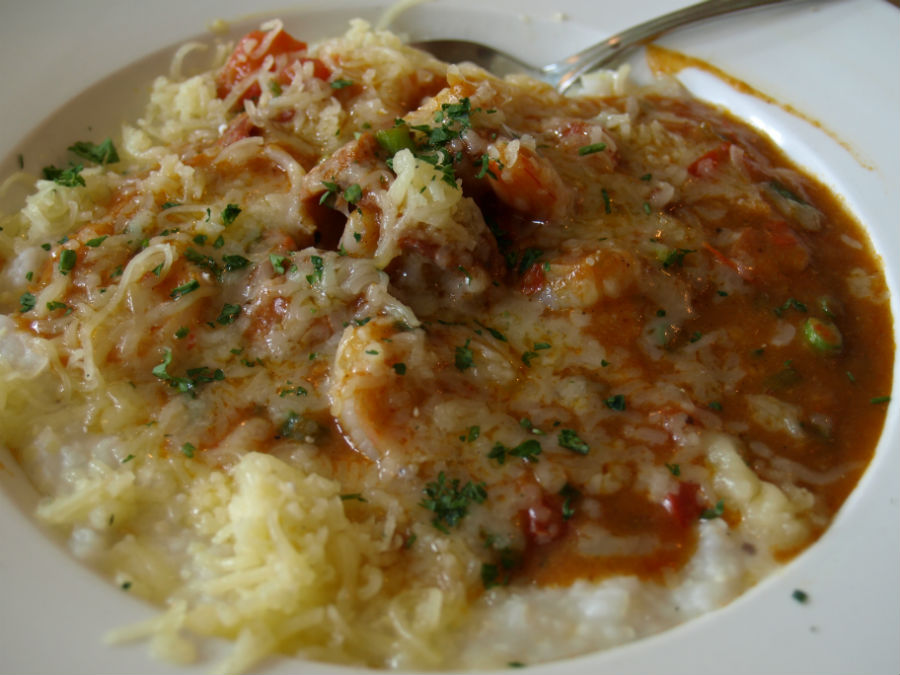
- Shrimp and Grits at the Front Street Grill at Stillwater in historic Beaufort (North Carolina) were calling to me. Really loudly. To think that I almost ordered something else from the menu (having loaded up on shrimp as we travelled down the coast the previous week) . . . best not to think about it. It was an amazing meal of enormous, local shrimp in a tasso gravy with sundered tomatoes and mushrooms, served over stone-ground cheese grits. I am a fan for life.
- The signature dish of Shrimp and Grits at City Grocery in Oxford, Mississippi. In 2009 the restaurant won the James Beard Foundation Award for Best Southern Chef. We snagged a table at the window and had a great view of the main courthouse square in downtown Oxford. It was like watching the set of a John Grisham novel (in fact, Grisham used to call Oxford home). The dish starts with Original Grit Girl cheese grits and adds plump, sautéed shrimp, garlic, mushrooms, scallions, white wine, lemon juice and local Big Bad bacon. Shrimp and Grits has been on the menu for 21 years and nobody’s talking about taking it off.
- Thought I’d died and gone to heaven with the Shrimp & Grits at the Breakwater Restaurant in small Hatteras village near the bottom of the North Carolina Outer Banks. If you’re unsure about grits, the flavour-filled stone-ground grits of this dish will convert you for life. The grits were the perfect backdrop to soak up a flavour-filled mixture of sautéed Carolina shrimp, spicy Andouille sausage, roasted tomatoes, mushrooms and garlic. One of the best meals of our travels.
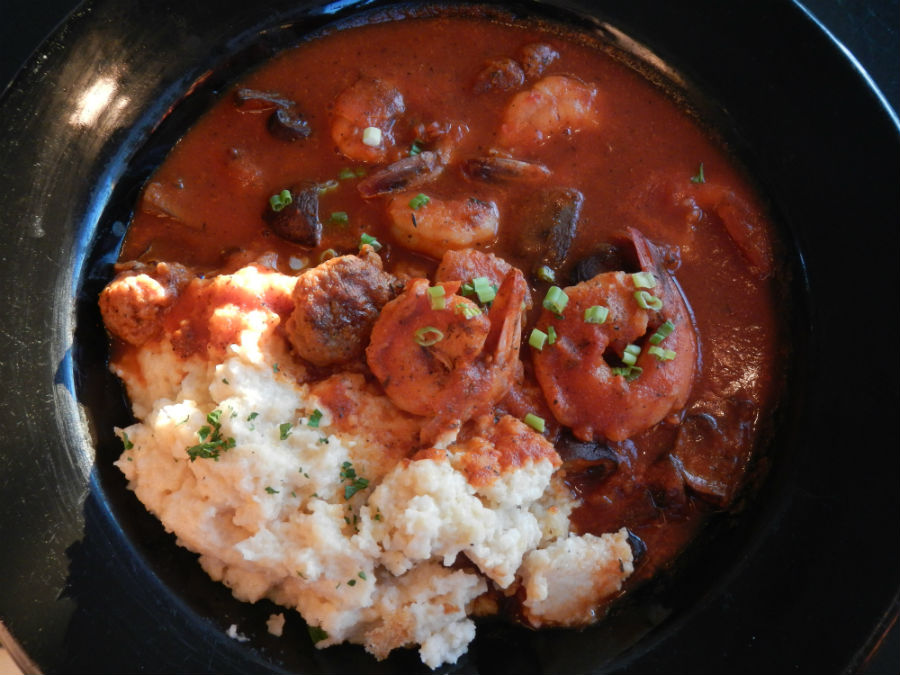
The Final Word: Grits vary from plain (for those who like their foods tilting toward bland) to a wonderful backdrop for Gulf Coast shrimp, hot sauces and creamy cheese. We’ve learned that not all grits are created the same – they’ve ranged from “meh” to “gimme more” so we’re always willing to give them a try.
2. BISCUITS AND GRAVY
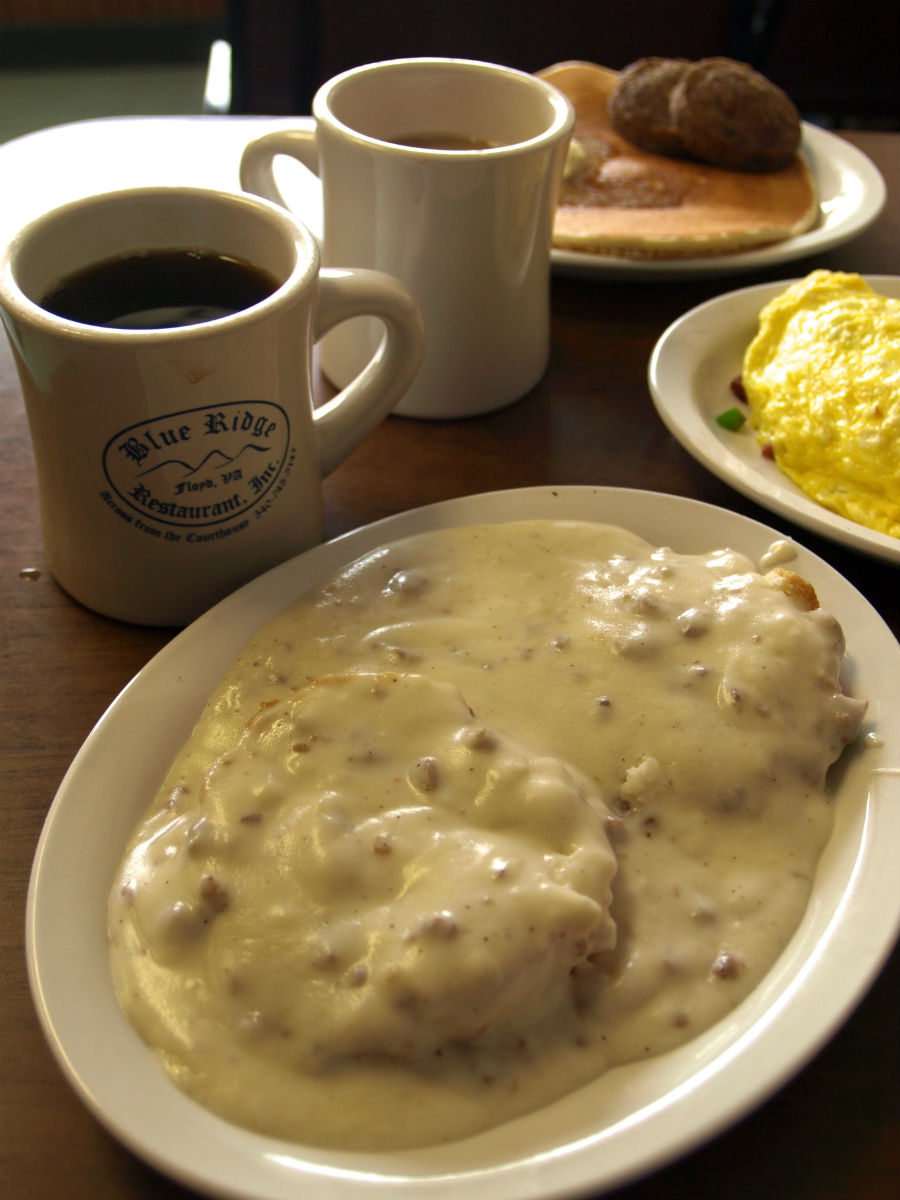
The Nuts & Bolts: Biscuits and gravy are not haute cuisine, but they are classic Southern breakfast comfort food. It is a caloric blowout, for sure. They are so passionate about it across the South that the second week of September has been crowned National Biscuits and Gravy Week. Who knew?
Must-Eat Experiences:
- The chief of police was settled into the booth next to ours at the Blue Ridge Restaurant in Floyd, VA. Two tables over there’s a spirited discussion about local politics. If ever there was a place to experiment with authentic biscuits and gravy, this was it. The serving that arrived was enormous – easily enough to feed two – home-style biscuits doused with a white gravy peppered with sausage bits and a serving of Virginia ham on the side. The Blue Ridge is in the former Floyd County Bank Building – they still use the walk-in vault as a cooler.
The Final Word: It’s definitely “a Southern thing,” showing up on menus from McDonald’s restaurants to virtually every breakfast diner, in every state across the region. Locals we spoke to crave their biscuits and gravy hit in the morning.
3. BARBECUE
The Nuts & Bolts: We think there’s no such thing as bad barbecue . . . some just tastes better than others. But talk about regional rivalries – roasted with sauce, sauce added at serving; dry-rubbed, moist marinade; hickory wood, maple wood. One could spark a bar brawl with this kind of talk.
Must-Eat Experiences:
- We visited months ago but we’re still dreaming of the pork barbecue at Ubon’s Barbecue, just outside Yazoo City, MS. Ubon’s award-winning pork ribs and beef brisket are to die for. Five generations of the Roark family stick close to the original recipes – back in the day they cooked up their sauces in a five-gallon washtub. “Best funeral a dead pig could ever have” boasts a sign outside the kitchen.
- Jim ‘N Nick’s in Birmingham, AL is the original restaurant, the mothership of their locations across the South. Their conviction is that barbecue is the union of hickory and fire. All else stems from this one truth. The sandwich board on the sidewalk claims “the best pulled pork anywhere,” blues riffs drift from the open doorway, and the tantalizing smell of barbecue reaches out and yanks you inside. The meat arrives fresh and is slowly smoked over the low heat of a hickory wood fire (14 hours for the pulled pork). The slow-smoked meat shows up in all quadrants of the menu – in sandwiches, loaded on top of nachos, on baked potatoes, and mixed into salads.
- In Abingdon, VA – along The Crooked Road music trail at the heritage centre called Heartwood the small restaurant serves barbecue including delicious pulled pork on a bun with blue cheese coleslaw, baked beans and sweet & spicy dill pickles. Heartwood holds a free Thursday evening open jam where local musicians play old-time and bluegrass.
The Final Word: Sampling barbecue is the dream assignment. Pulled pork, beef brisket, ribs served with classic Southern sides like baked beans and homemade coleslaw. As one local told us: “My grandfather used to say they’d eat everything but the squeal.”
4. FRIED CHICKEN
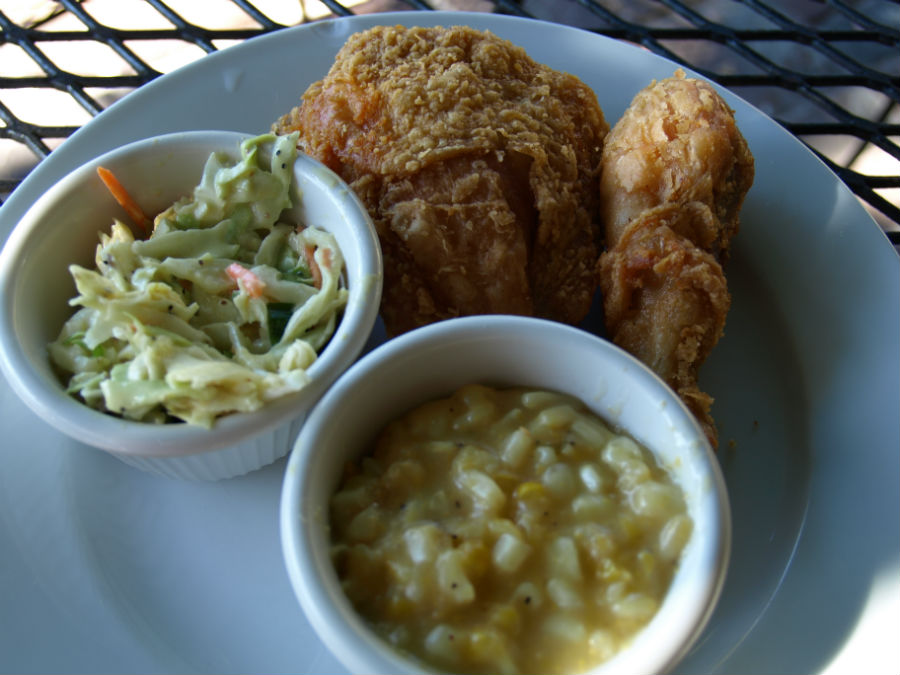
The Nuts & Bolts: What can we say? They like to fry things across the South. And they especially like to fry chicken. Southern fried chicken is a religious experience: chicken pieces are battered and then pan-fried or deep-fried in sizzling oil. Seasonings may or may not be part of the equation. There’s a law in the South: Everyone’s mother makes the best fried chicken.
Must-Eat Experiences:
- In historic Vicksburg, MS – a stop along the beautiful Natchez Trace Trail and the location of the Vicksburg National Military Park – the Walnut Hills Restaurant served us their delicious Blue Plate Special of cayenne-sprinkled fried chicken, fried corn, okra and tomatoes, mustard greens, coleslaw and a tall glass of sweet tea.
The Final Word: You cannot escape from the South without bellying up to a picnic table meal of fried chicken. Our main takeaway? Chicken + batter + hot oil = everyone’s mother makes the best fried chicken (natch).
5. FRESH SEAFOOD

The Nuts & Bolts: It should come as no surprise that we ate fresh seafood every day while visiting the Gulf Coast states. We asked locals where to find a supplier at the docks, and often there was a shrimp boat tied up outside. Two family-run favourites were 13 Mile Seafood Market (great shrimp and oysters) in Apalachicola, FL and Joe Patti’s Seafood in Pensacola, FL. Without a word of a lie, you can literally jump from the shrimp boat into the side door of Joe Patti’s, one of the largest fresh seafood markets in the whole Southeast.
Must-Eat Experiences:
- Every once in a while a meal lands on the plate that makes us salivate for weeks afterwards, aching for a repeat performance. Such was dinner at the Breakwater Restaurant in the village of Hatteras, well down the coastline of North Carolina’s Outer Banks. It would be hard to beat the starter of Steamed Shrimp (21/25 count size) pulled from the sea just a short distance up the NC coast. The moist, meaty, enormous shrimp were seasoned with Old Bay, steamed, and served with melted butter for dipping. We ordered the half-pound and quickly wished we’d indulged in the full pound plate. Their Shrimp & Grits main dish (see Grits, above) was just as amazing.
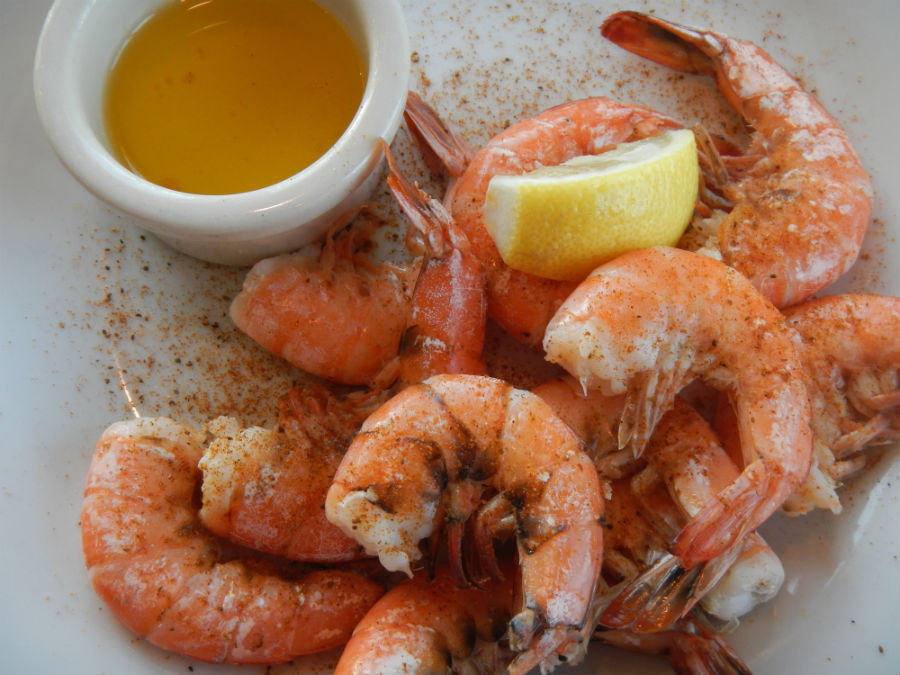
- Joe Patti’s will steam a bucket of shrimp for you to eat in the car. Grab a handful of napkins and chances are the shrimp won’t even make it out of the parking lot. We bought a pound of shrimp, took it out to the van and cooked it up right away, then ate picnic style.
- The Steamboat Warehouse is one of the few remaining cotton warehouses on the banks of the Bayou Courtableau in tiny Washington, LA. The Eggplant Belle Rose appetizer is worth every one of its seafood-laced gazillion calories: fried eggplant medallions are topped with Gulf shrimp and fresh crabmeat, then smothered with a creamy seafood sauce and chunks of fresh bluepoint crabmeat. So rich we had to share.
- Remoulade (in the French Quarter) serves New Orleans specialties like seafood gumbo, crawfish pie, soft-shell crab and fried catfish. We downed a platter of Shrimp Creole and practically licked the plate.
- It’s crowded. It’s loud. It’s so way bigger than popular. And the seafood is off-the-boat fresh. It’s an Outer Banks classic: Sam & Omie’s in Nags Head, North Carolina. We gorged on seafood with their signature Shrimp Burger (an enormous pile of fried shrimp loaded onto a coleslaw-lined bun). It’s messy but delicious — if you’ve eaten one and don’t have the juices running down your arms . . . well, then you haven’t eaten one.
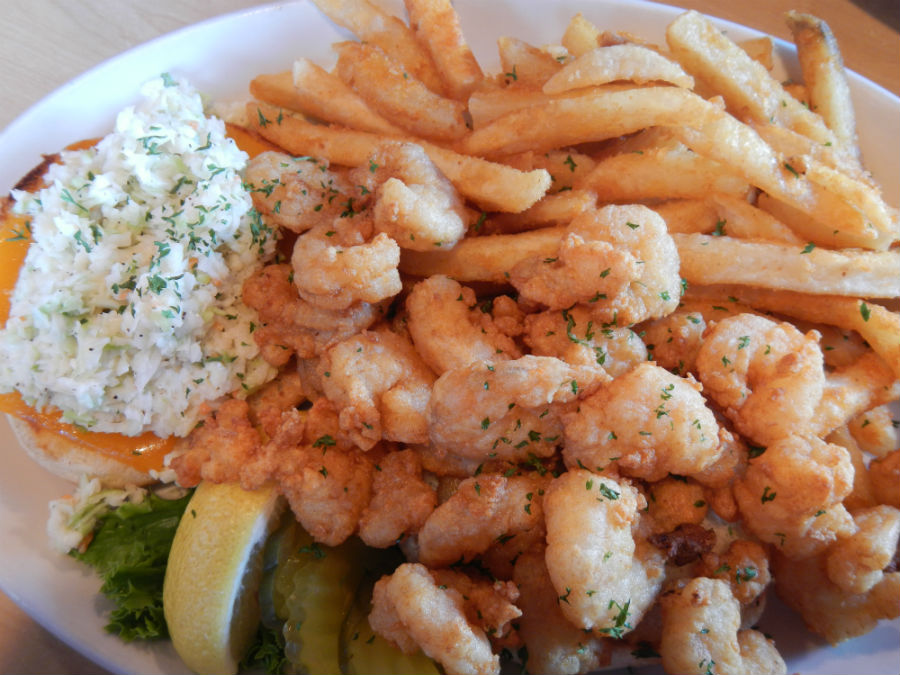
The Final Word: One can never have too much fresh seafood. And South is the place to get it.
6. CAJUN
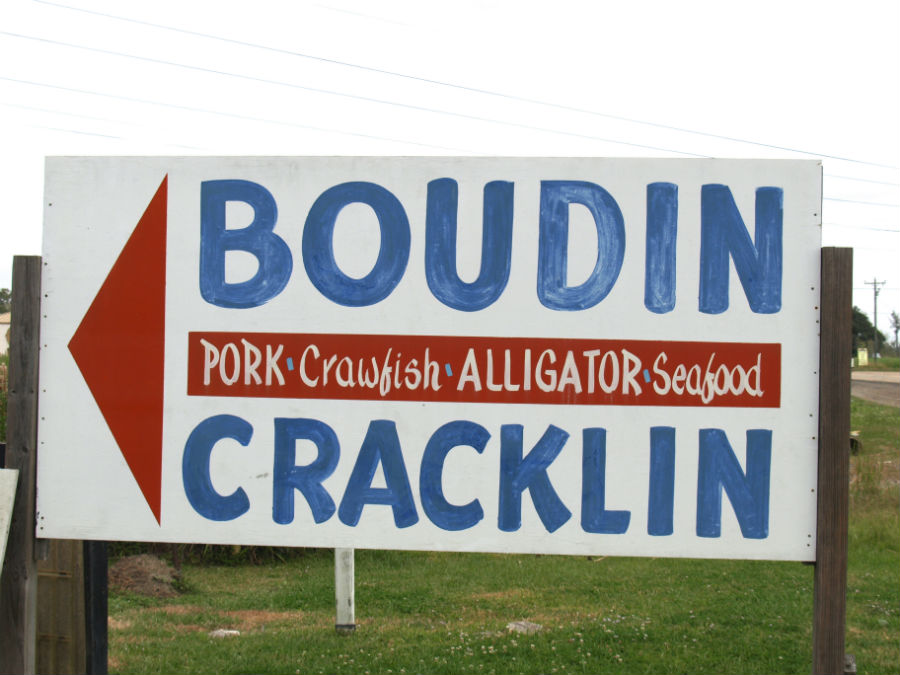
The Nuts & Bolts: Cajun cooking is, ahem, “different.” Some might describe it as an acquired taste but for the Cajuns who settled in the bayou and the remote prairie of Louisiana, they depended on a diet that leaned heavily toward seafood, local wildlife (think: gators and shrimp), heavily seasoned dishes and hearty meals, like stews and gumbos.
Must-Eat Experiences:
- Crawfish Town USA in Breaux Bridge, LA specializes in Cajun favourites – gumbo, étouffée, cracklin’, boudin, bisques and crawfish boils. We had a delicious Spicy Shrimp and Chicken Pasta – which sounds ho-hum but was anything but bland.
- Tabasco sauce is made from peppers on a family-run specialty farm on Avery Island in rural Louisiana. Getting to the factory was a drive across miles of low bayou country, past fields of sugar cane and rice but once there we indulged in the short factory tour. They don’t serve full meals at the site but, no matter, you can get Tabasco sauce at virtually every restaurant across the state (and much of the world). It’s a tabletop staple.
- Everywhere across the small towns and down rural roads we saw signs for boudin, gator-on-a-stick and cracklin’.
The Final Word: Sometimes we couldn’t get enough – dishes like shrimp étouffée and pecan pie. Other unique dishes – deep-fried cracklin’ and boudin – were new to our tastebuds but beloved by locals. There’s lots to choose from in Cajun cuisine, so we never went hungry. Loved the spiciness! Best of all, food and music usually went together.

